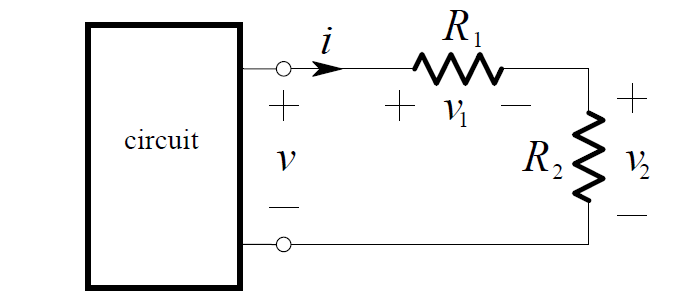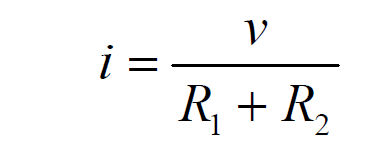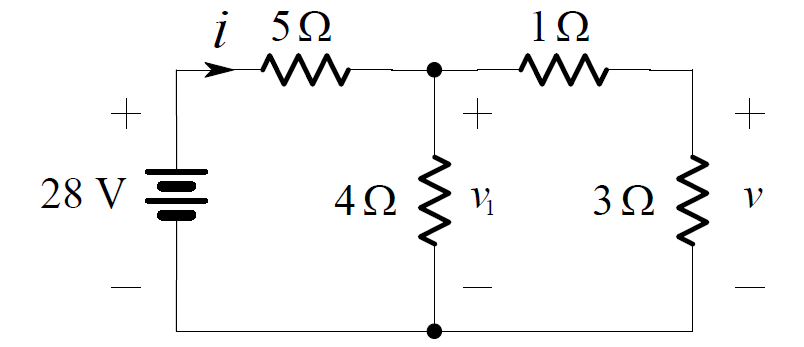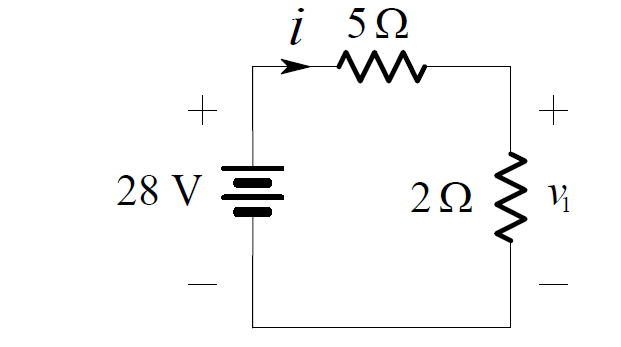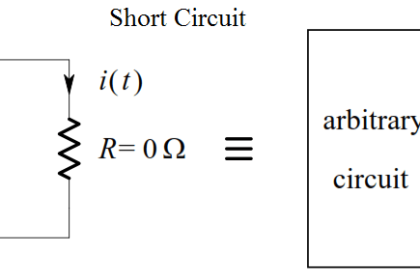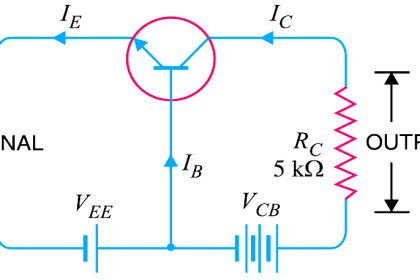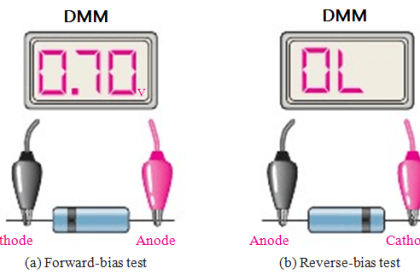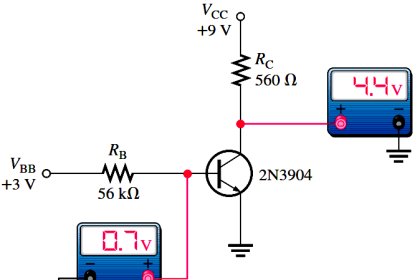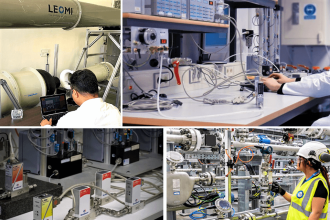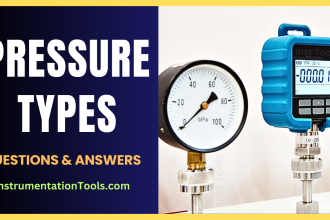It can be quite useful to determine how a voltage appearing across two series resistors “divides” between them.
Consider the circuit shown below:
By Ohm’s Law, the current in the resistors is:
By application of Ohm’s Law again, the voltage across R1 is:
v1 = R1 . i
and therefore:
Similarly, the voltage across R2 is:
These equations describe how the voltage is divided between the resistors. Because of this, a pair of resistors in series is often called a voltage divider.
Example:
We want to find the voltage v in the circuit below:
Combining the series connection of the 1 ohm and 3 ohm resistors, we obtain the
Now the pair of 4 ohms resistors in parallel can be combined as shown below:
By voltage division:
Returning to the original circuit and applying voltage division again yields:
